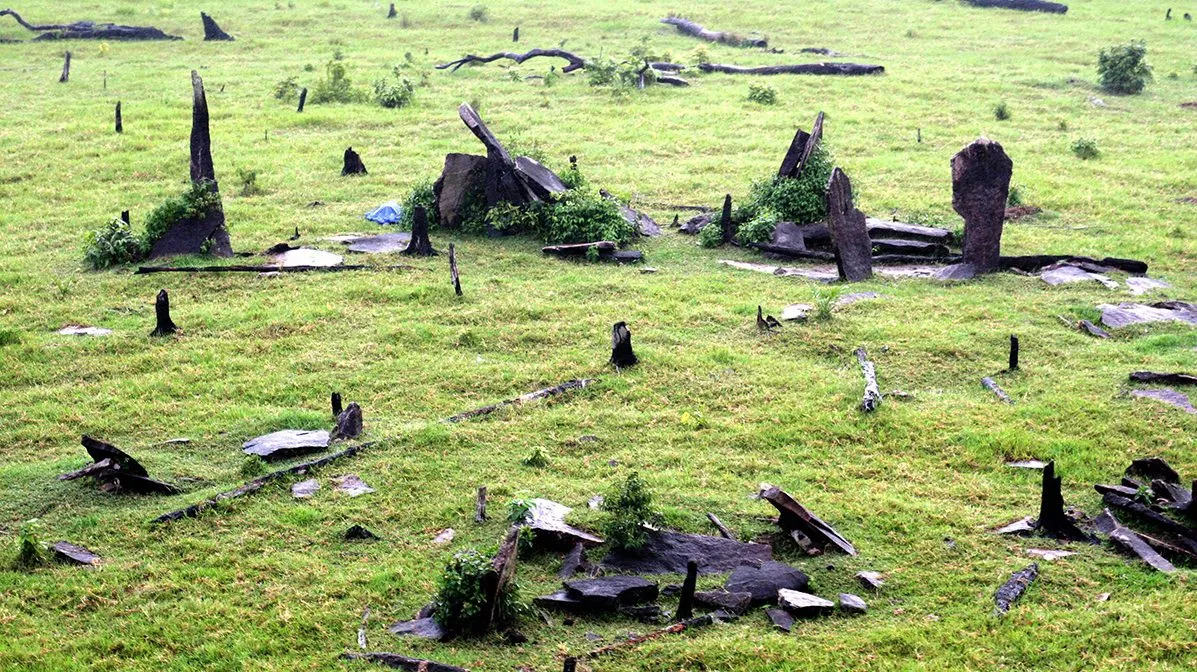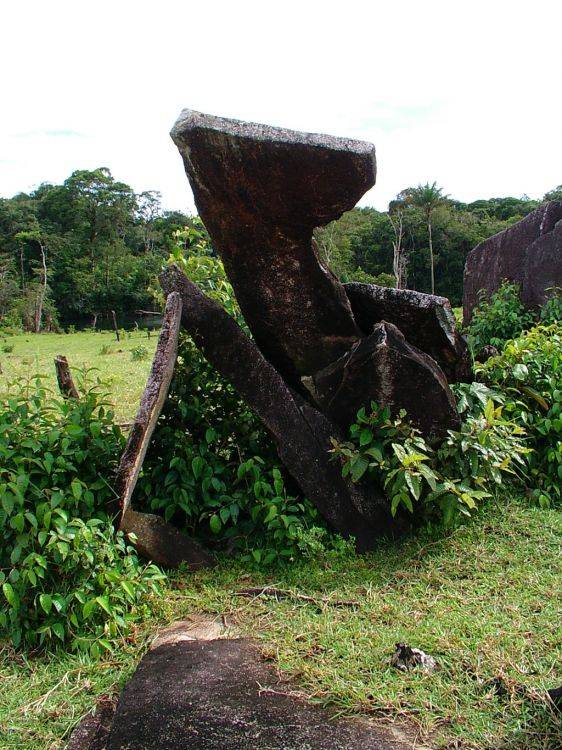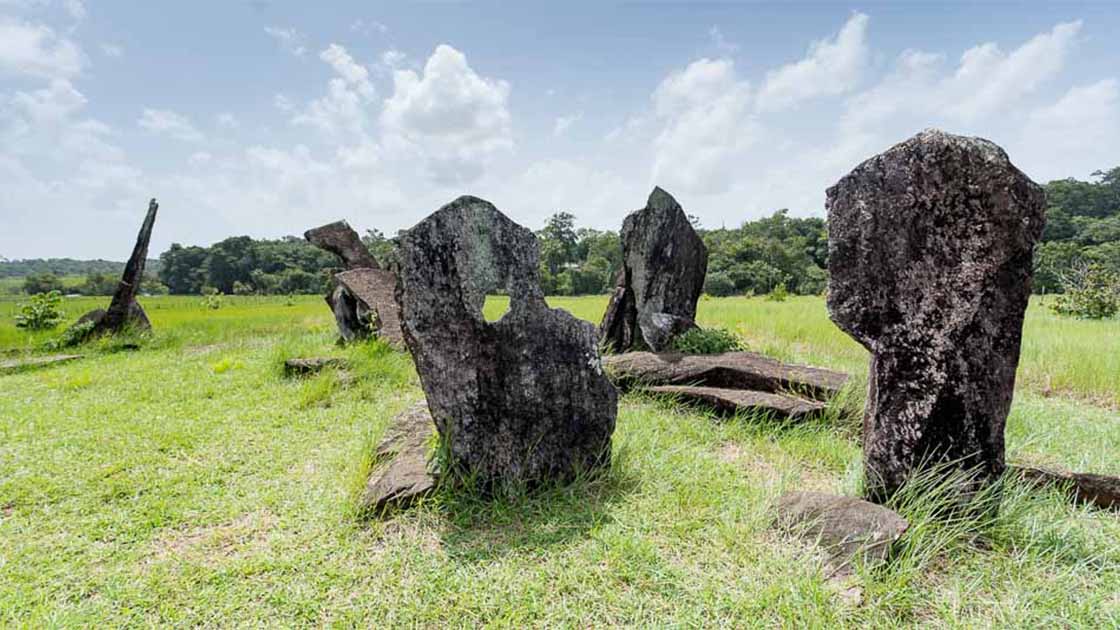The Parque Arqueológico do Solstício, also known as the Solstice Archaeological Park, is a significant prehistoric site located in Brazil. It is renowned for its megalithic stone structures that align with the movements of the sun, particularly during the winter solstice. The site offers a glimpse into ancient astronomical practices and the sophisticated understanding of celestial events by pre-Columbian cultures in South America.
Get your dose of History via Email
Historical Background of Parque Arqueológico do Solstício
The Parque Arqueológico do Solstício was discovered in the 1960s by a Brazilian archaeologist named Bernardo da Silva Ramos. He stumbled upon the site while conducting a survey in the Amazon region. The park is home to a collection of megaliths, which were likely constructed by the indigenous peoples of the region. These structures date back to between 500 and 2000 AD, making them a testament to the advanced knowledge of astronomy possessed by pre-Columbian societies.
Little is known about the specific culture that built the megaliths. However, it is clear that they had a sophisticated understanding of the solar cycle. The site later became a point of interest for archaeologists and historians alike. It has not been the scene of any known historically significant events since its construction. Yet, it remains an important cultural and historical landmark, providing insight into the lives and beliefs of the people who once inhabited the area.
Over the years, the Parque Arqueológico do Solstício has attracted researchers from various fields. They aim to unravel the mysteries of the site. The megaliths are arranged in a particular pattern, which suggests that they served an astronomical purpose. The site’s layout indicates that it was likely used for ceremonial or calendrical events, aligning with the winter solstice.
Despite its remote location, the Parque Arqueológico do Solstício has become an important destination for those interested in pre-Columbian archaeology. The Brazilian government has recognized the significance of the site. It has taken steps to preserve and study the megaliths. This ensures that they remain a source of knowledge and wonder for future generations.

The Parque Arqueológico do Solstício is not just an archaeological treasure but also a reminder of the ingenuity of ancient cultures. It stands as a testament to the human desire to understand and celebrate the cosmos. The site continues to be a focal point for research and education, shedding light on the complex societies that once thrived in the Amazon basin.
About Parque Arqueológico do Solstício
The Parque Arqueológico do Solstício is a complex of megalithic structures located in the state of Amapá, Brazil. The site covers an area of approximately 500 hectares. It contains over 100 granite blocks, some standing over 3 meters tall. These megaliths are arranged in circular patterns and lines, stretching across the landscape.
The construction methods of the megaliths remain a topic of research. The stones were likely transported from nearby quarries using human or animal labor. The builders then meticulously placed them in specific positions. This suggests a high level of organization and knowledge of stonework among the ancient inhabitants.

Architectural highlights of the site include alignments with the winter solstice sunrise and sunset. This indicates a purpose beyond mere construction. The megaliths likely served as an astronomical observatory or a ceremonial space. The precise positioning of the stones allowed for the tracking of celestial events, which were crucial for agricultural and ritual activities.
The materials used in the construction of the megaliths are primarily local granite. This suggests that the builders utilized resources available in their immediate environment. The durability of the stone has allowed the structures to withstand the test of time, preserving the site for centuries.
Overall, the Parque Arqueológico do Solstício is a marvel of ancient engineering and astronomical precision. Its existence provides valuable insights into the cultural and technological capabilities of the region’s prehistoric inhabitants. The site continues to captivate researchers and visitors with its mysterious origins and purpose.
Theories and Interpretations
Several theories have been proposed regarding the purpose of the Parque Arqueológico do Solstício. The most widely accepted theory is that the site functioned as an astronomical observatory. The alignments of the megaliths with the solstices support this interpretation. The site’s design allowed ancient peoples to mark the changing seasons and plan agricultural activities accordingly.

Some researchers suggest that the site had a ceremonial or religious significance. The solstices were important events in many ancient cultures. They often marked them with rituals and celebrations. The Parque Arqueológico do Solstício may have been a gathering place for such occasions, where the community came together to observe the sun’s movements and honor their deities.
Mysteries still surround the site, particularly regarding the identity of its builders and their methods. The lack of written records from the time means that much of what we know about the site is based on archaeological evidence and educated guesses. The precise techniques used to transport and erect the massive stones remain a topic of speculation.
Historical records from the region are scarce, making it difficult to match the site with known cultures or events. However, dating has been carried out using various methods, including radiocarbon dating and archaeoastronomy. These techniques have helped establish a rough timeline for the construction and use of the site.
Despite the ongoing research, the Parque Arqueológico do Solstício retains an air of mystery. Its true purpose and the extent of its significance to the people who built it may never be fully understood. Nevertheless, the site continues to be an important piece of the puzzle in understanding the pre-Columbian history of South America.
At a glance
- Country: Brazil
- Civilization: Pre-Columbian indigenous peoples
- Age: Approximately 500 to 2000 AD

